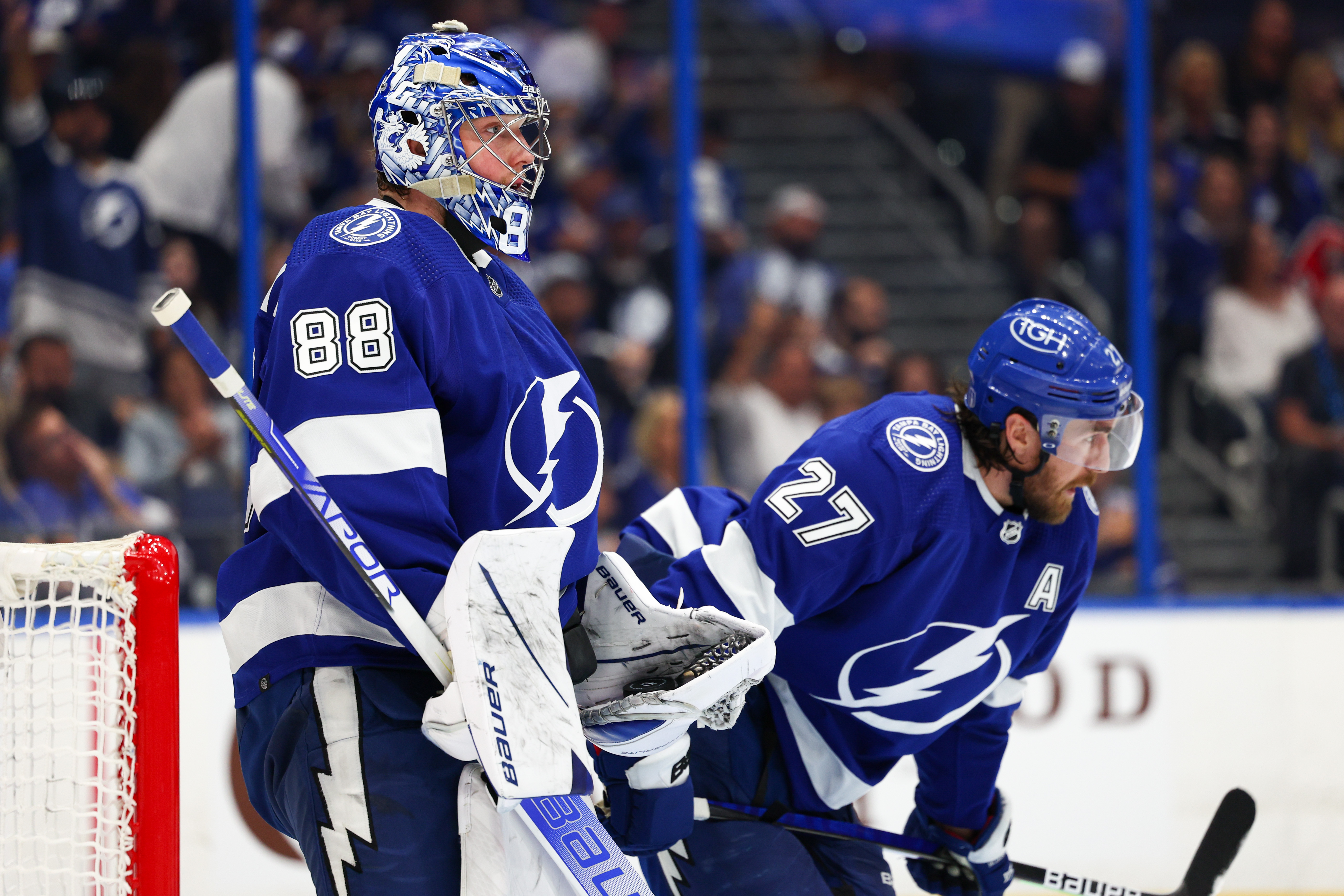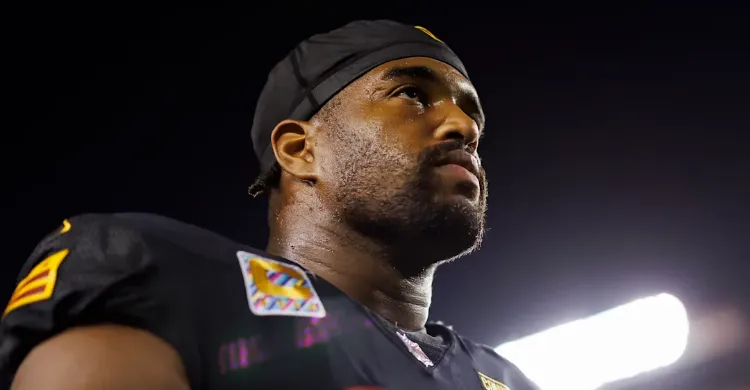For the longest time, the captain’s pride served the Lightning well.
Steven Stamkos helped create — and enforce — a certain standard in the Tampa Bay locker room. He was the conduit between the coaching staff and the players. He was the unofficial spokesperson when things went south and the player others turned to for help, advice and inspiration.

And when the team reached a crossroads last summer where talent and the salary cap had begun to diverge in serious ways, the captain’s pride rescued the Lightning one more time.
Even if it was completely unintentional.
On the eve of another postseason, the reinvention of the Lightning is a remarkable tale of foresight, execution and daring.
After three consecutive trips to the Stanley Cup Final from 2020 to 2022, the combination of age and salary-cap restraints had diminished the Tampa Bay roster. The Lightning had been bounced out of the playoffs in the first round in consecutive seasons, and their peripherals were not promising.
Their once-formidable defense had slipped to 23rd in the NHL in goals allowed. Just as concerning, with a roster of stars, they had been outscored 190-172 in 5-on-5 situations. The Lightning were not just heading in the wrong direction, they were close to arrival.
That made last summer a critical juncture in the team’s future. After dancing around a nearly stagnant salary cap — a combined $2 million increase across four seasons — the NHL boosted the maximum payroll by $4.5 million for this season to $88 million.
Between the cap increase and the end of a Stamkos contract that was paying him $8.5 million a year, Lightning general manager Julien BriseBois finally had the flexibility for significant upgrades.
The broad strokes of a strategy emerged.
Reacquire defenseman Ryan McDonagh from Nashville to solidify the blue line, sign Stamkos to a reduced salary and find a complementary forward who could add some stability to the Lightning’s 200-foot game.
The McDonagh trade came off without a hitch. The Predators wanted salary-cap flexibility of their own and agreed to deal the veteran in an exchange of draft picks.
It was the second part of the equation — re-signing Stamkos — that became a sticking point. Between his age (34 at the time) and diminished value in even-strength situations, BriseBois was no longer willing to pay his captain an upper-echelon salary.
Stamkos had always carried himself with an admirable sense of humility, but that did not mean he was devoid of pride. He was bothered by the reduced salary offer and declined to sign. Free agency was around the corner, and he appeared ready to test the market.
Which forced BriseBois to readjust his plan.
If the unthinkable was now in play — the possibility of a Stamkos-less lineup — BriseBois was open to an even greater reimagining of the roster. While the Lightning have been aggressive in tying up their own players to long-term contracts, they’ve been less willing to dip into high-end free-agent deals.
That reticence changed with Jake Guentzel’s availability.
In Tampa Bay’s thinking, Guentzel was the most complete forward on the open market in five seasons or more. But signing Guentzel would take an offer that was probably double the annual salary the Lightning were currently offering Stamkos. That meant BriseBois needed to find even more salary-cap room to make a run at Guentzel.
It was already getting late in the summer — just a week before the NHL draft — when the Lightning began seriously pondering the idea of moving Mikhail Sergachev. He was 26, had size, skating ability, could run the power play and was signed to a long-term deal. Losing Sergachev was not something the Lightning had previously pondered, but bringing McDonagh back to Tampa Bay made it an easier pill to swallow.
Trading Sergachev would not only give BriseBois the cap flexibility to chase Guentzel, it could also bring back quality players in return. So, in a 24-hour period, the Bolts dealt Sergachev to Utah for defenseman J.J. Moser and forward prospect Conor Geekie and then acquired Guentzel from Carolina and signed him to a seven-year, $63 million deal just hours before he became a free agent.
Later in the day, Stamkos signed a four-year, $32 million contract with Nashville, and the makeover was complete.
Guentzel would replace Stamkos in the forward group, and McDonagh and Moser were now part of Tampa Bay’s top-four defensemen with Sergachev out of the picture.
In retrospect, the captain’s refusal to accept a roughly 50% cut in annual salary had disrupted the team’s planned makeover, but BriseBois had improvised and come up with an even stronger plan.
How did it work?
With McDonagh providing a more defense-first style and Stamkos-level leadership, the Lightning have gone from 23rd in goals allowed to fourth. And that 190-172 deficit in 5-on-5 play was reversed to a 186-144 surplus. That’s an improvement from minus-18 to plus-42 in a single season.
The power play and penalty kill are both among the top six in the league, and Tampa Bay’s regular-season points percentage was back above .600 for the first time since its last Stanley Cup Final appearance in 2022.
Guentzel is also five years younger than Stamkos, Moser is two years younger than Sergachev and Geekie, at 20, is the best forward prospect Tampa Bay has.
Does any of that guarantee the Lightning will avoid another first-round departure?
Of course not.
Technically, they may be slight favorites against Florida, but the Panthers are the defending Stanley Cup champions and routed the Lightning in the first round of the 2024 postseason.
But this is arguably the best version of the Lightning in the last three seasons, and the team is also set up for the future with the fresh blood added to the roster.
For all the wailing and finger-pointing when Stamkos was not re-signed last summer, the Lightning’s confidence and resolve to not overpay for a star in his twilight years may have set Tampa Bay on another path to postseason glory.



